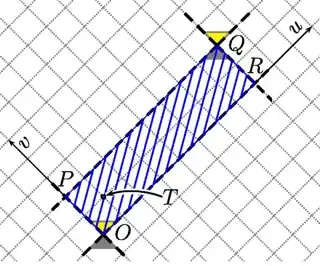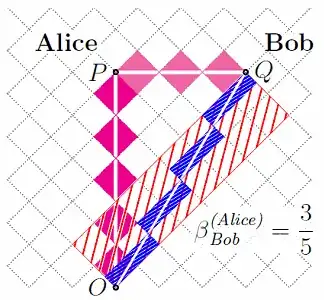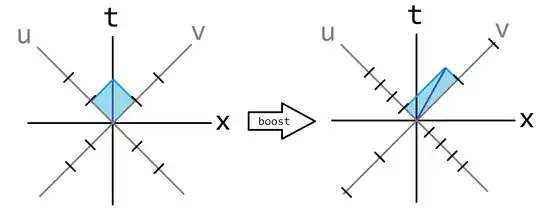Here is a partial answer to your questions:
Are areas describing any meaningful quantity?
In (1+1)D-Minkowski spacetime, the area of causal diamond of OQ (the intersection of the causal future of event O and the causal past of event Q, where OQ is future causal) is equal to square-interval of OQ (the causal diagonal of the diamond).
This fact is exploited in my article
"Relativity on rotated graph paper"
American Journal of Physics 84, 344 (2016); https://doi.org/10.1119/1.4943251
which tries visualize the ticks (as traced out by a standard-issued light-clock) along piecewise-inertial segments on a spacetime diagram.
(See my entry at also https://www.physicsforums.com/insights/relativity-rotated-graph-paper/ )
(One inspiration of this approach was referenced in the above:
"Space–time intervals as light rectangles"
American Journal of Physics 66, 1077 (1998); https://doi.org/10.1119/1.19047
N. David Mermin)
In the diagram below, the area of the causal diamond of OQ is 16 units.
So the square interval of the diagonal OQ is 4.
(The diagonal OQ is a segment of a worldline with velocity 3/5c, as seen in the next diagram... where some points are relabeled. Note that all ticks [called light-clock diamonds] along all piecewise-inertial worldlines have the same area.
This follows from the fact that the set of “1 tick events after separation” lie on a hyperbola... which follows from the determinant being equal to 1.)




